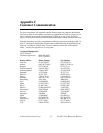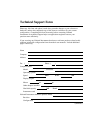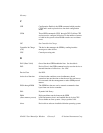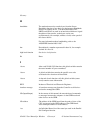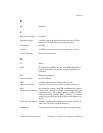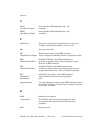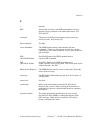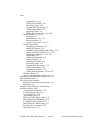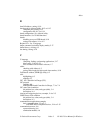Glossary
NI-488.2 User Manual for Windows Glossary-4 © National Instruments Corp.
H
handshake The mechanism used to transfer bytes from the Source
Handshake function of one device to the Acceptor Handshake
function of another device. The three GPIB lines DAV,
NRFD, and NDAC are used in an interlocked fashion to signal
the phases of the transfer, so that bytes can be sent
asynchronously (for example, without a clock) at the speed of
the slowest device.
For more information about handshaking, refer to the
ANSI/IEEE Standard 488.1-1987.
hex Hexadecimal; a number represented in base 16, for example
decimal 16 = hex 10.
high-level function See device-level function.
Hz Hertz.
I
ibcnt After each NI-488.2 I/O function, this global variable contains
the actual number of bytes transmitted.
iberr A global variable that contains the specific error code
associated with a function call that failed.
ibsta At the end of each function call, this global variable (status
word) contains status information.
IEEE Institute of Electrical and Electronic Engineers.
interface message A broadcast message sent from the Controller to all devices
and used to manage the GPIB.
I/O (Input/Output) In the context of this manual, the transmission of commands
or messages between the computer via the GPIB board and
other devices on the GPIB.
I/O address The address of the GPIB board from the point of view of the
CPU, as opposed to the GPIB address of the GPIB board.
Also called port address or board address.
ist An Individual Status bit of the status byte used in the Parallel
Poll Configure function.



